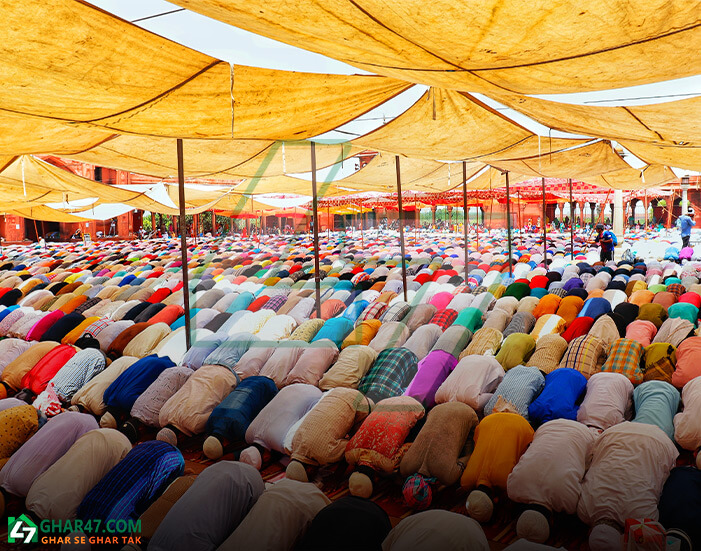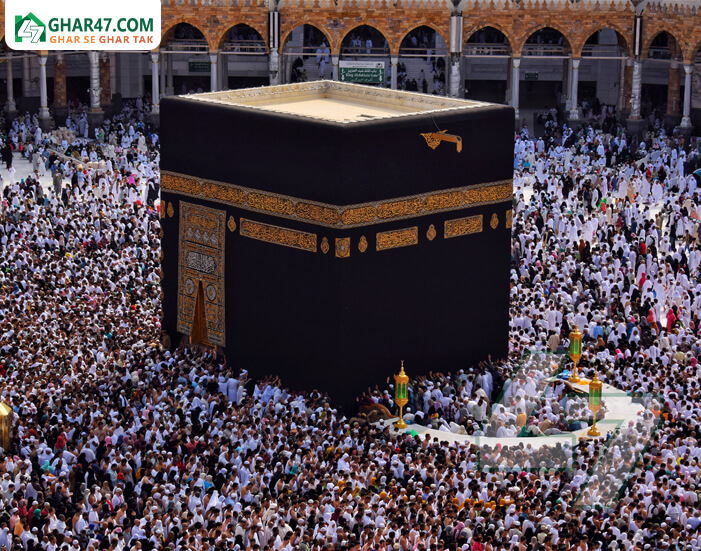
Eid ul Adha may be known to you or a holiday that you observe yourself. But even some Muslims are unaware of the significance and background of this Eid. Its history is even more extensive than that of a celebration that is merely for fun. Let’s learn more about Eid ul Adha in order to understand how to celebrate this Eid in accordance with Islam’s ideal guidelines.
What is Eid ul Adha?
In Islam, there are just two eids, one of which is named Eid ul Adha. Other titles for it include the Greater Eid, the Celebration of Sacrifice, and the Feast of Sacrifice. Every year, on the tenth day of Dhu al-Hijjah in the Islamic lunar calendar, a particularly holy celebratory event, Eid ul Adha, is celebrated. It is a significant occasion that concludes the Hajj. Muslims from all over the globe observe it in accordance with Islamic law. The other eid is Eid ul Fitr.
In Islam, as is well known, everything happens for a purpose, including this celebration. So let’s learn about the history of this occasion to understand why Muslims commemorate it in the manner that they do.
Origin
Muslims all throughout the globe commemorate the sacrifice that Prophet Ibrahim (A.S) made. He was instructed by Allah to sacrifice his son Ismail(AS). Ibrahim believed a dream he had to be a message from Allah urging him to sacrifice his son Ismail (AS) to Him. Allah substituted a ram for Prophet Ismail (AS) just as he was ready to do it. This demonstration of his steadfast faith in Allah was well received by Allah.

This act of selflessness and faith was made a permanent feature of a Muslim’s life by Allah. Because of this, Muslims worldwide observe Eid ul Azha on the tenth of Dhul Hijjah each year. On this day, Muslims present a lamb, sheep, goat, or camel as a sacrifice to remember Ibrahim’s(AS) tribute.
The Animal Sacrifice
Muslims all throughout the globe who have the resources to do so sacrifice a sheep, a goat, or a cow to serve as a reminder of Ibrahim’s submission to Allah. Typically, they give the meat to their loved ones, close friends, and the less fortunate people in the neighborhood. The family that donates the animal consumes one-third of the meat, and the remaining meat is given to the underprivileged and those in need.
In order to be recognized as a sacrifice, the sacrificial animals, also known as Qurbani in Perso-Arabic, must meet certain age and quality requirements. On Eid days alone, Pakistan spends about $2 billion on the sacrifice of almost ten million animals.
Feast of Sacrifice
Some of the acts that are included in the celebration of Eid ul Adha include the celebration. A one to three day festival, Eid-ul-Adha is a national holiday in Muslim nations. Students are entertained and given the day off from school so that they can enjoy this event freely. On that day, many Muslims likewise choose not to work.

Muslims begin by entering the mosque for prayers and praising Allah for all their blessings. On the tenth of Dhu al-Hijjah, the Eid al-Adha prayer is offered anytime from after the sun has fully risen to just before the start of Zuhr time. One of the Sunnahs of Eid ul Adha is to rise early the following day, brush your teeth, use a Miswak, take a shower, you should wear your best attire on this day, use fragrance, avoid eating anything before Eid prayer, and while departing for Eid prayer, recite the Takbir of Tashriq.
Muslims typically wear new clothes and clean themselves and their houses. Some exchange presents with each other to enhance their relationship and love. They make tasty food, especially with the meat they have from their animal sacrifice. In addition to seeing and welcoming extended family members, sweets and presents are frequently offered. It is also required to donate a certain amount to charity on Eid so that it can be utilized to assist the less fortunate in celebrating the holiday.
The Hajj
The first 10 days of Dhul Hijjah are when the Hajj rituals begin (from 8th to 13th). Makkah is located in Saudi Arabia where the Hajj is performed. All physically healthy Muslims who can afford to travel there should do so at least once in their lifetime. They go to a place of worship in the city called the Kaaba, which was created at Allah’s order by Prophet Ibrahim (AS) and Prophet Ismail (AS). As the Fifth Pillar of Islam, the Hajj is a crucial component of the Islamic religion.

Another purpose of this Eid is to glorify Allah. Muslims assemble to express gratitude to God for all of His gifts bestowed upon us. One should use this chance to glorify Allah as much as possible. This is also due to the fact that during this festive period, good actions performed on these days are seen as being greater than those performed on other days. Therefore, Muslims must make the most of this time in order to draw closer to Allah and beg for His mercy.
There you have it: a thorough analysis of Eid ul Adha, The Greater Eid. Hopefully, this information helped you learn more about Eid ul Adha and the significance of the holiday. If you liked what you read, explore more of our online writing on our website and share it with your friends!
